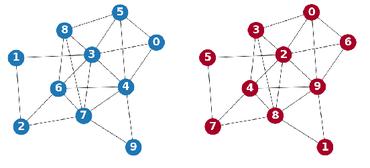Search Results for author: Ling Tian
Found 16 papers, 6 papers with code
Dual-View Data Hallucination with Semantic Relation Guidance for Few-Shot Image Recognition
no code implementations • 13 Jan 2024 • Hefeng Wu, Guangzhi Ye, Ziyang Zhou, Ling Tian, Qing Wang, Liang Lin
Specifically, an instance-view data hallucination module hallucinates each sample of a novel class to generate new data by employing local semantic correlated attention and global semantic feature fusion derived from base classes.
Learning Multi-graph Structure for Temporal Knowledge Graph Reasoning
no code implementations • 4 Dec 2023 • Jinchuan Zhang, Bei Hui, Chong Mu, Ling Tian
Concretely, it comprises three distinct modules concentrating on multiple aspects of graph structure knowledge within TKGs, including concurrent and evolutional patterns along timestamps, query-specific correlations across timestamps, and semantic dependencies of timestamps, which capture TKG features from various perspectives.
Non-Autoregressive Diffusion-based Temporal Point Processes for Continuous-Time Long-Term Event Prediction
no code implementations • 2 Nov 2023 • Wang-Tao Zhou, Zhao Kang, Ling Tian
Inspired by the success of denoising diffusion probabilistic models, we propose a diffusion-based non-autoregressive temporal point process model for long-term event prediction in continuous time.
Intensity-free Convolutional Temporal Point Process: Incorporating Local and Global Event Contexts
no code implementations • 24 Jun 2023 • Wang-Tao Zhou, Zhao Kang, Ling Tian, Yi Su
Popular convolutional neural networks, which are designated for local context capturing, have never been applied to TPP modelling due to their incapability of modelling in continuous time.
Adversarial Infrared Blocks: A Multi-view Black-box Attack to Thermal Infrared Detectors in Physical World
no code implementations • 21 Apr 2023 • Chengyin Hu, Weiwen Shi, Tingsong Jiang, Wen Yao, Ling Tian, Xiaoqian Chen
Infrared imaging systems have a vast array of potential applications in pedestrian detection and autonomous driving, and their safety performance is of great concern.
TieFake: Title-Text Similarity and Emotion-Aware Fake News Detection
1 code implementation • 19 Apr 2023 • Quanjiang Guo, Zhao Kang, Ling Tian, Zhouguo Chen
We also propose a scale-dot product attention mechanism to capture the similarity between title features and textual features.
Spacecraft Anomaly Detection with Attention Temporal Convolution Network
1 code implementation • 13 Mar 2023 • Liang Liu, Ling Tian, Zhao Kang, Tianqi Wan
The time series telemetry data generated by on-orbit spacecraft \textcolor{blue}{contains} important information about the status of spacecraft.
Document-level Relation Extraction with Cross-sentence Reasoning Graph
1 code implementation • 7 Mar 2023 • Hongfei Liu, Zhao Kang, Lizong Zhang, Ling Tian, Fujun Hua
Specifically, a simplified document-level graph is constructed to model the semantic information of all mentions and sentences in a document, and an entity-level graph is designed to explore relations of long-distance cross-sentence entity pairs.
Adversarial Color Projection: A Projector-based Physical Attack to DNNs
no code implementations • 19 Sep 2022 • Chengyin Hu, Weiwen Shi, Ling Tian
In the digital environment, we achieve an attack success rate of 97. 60% on a subset of ImageNet, while in the physical environment, we attain an attack success rate of 100% in the indoor test and 82. 14% in the outdoor test.
Semantic Representation and Dependency Learning for Multi-Label Image Recognition
no code implementations • 8 Apr 2022 • Tao Pu, Mingzhan Sun, Hefeng Wu, Tianshui Chen, Ling Tian, Liang Lin
We also design an object erasing (OE) module to implicitly learn semantic dependency among categories by erasing semantic-aware regions to regularize the network training.
Multilayer Graph Contrastive Clustering Network
no code implementations • 28 Dec 2021 • Liang Liu, Zhao Kang, Ling Tian, Wenbo Xu, Xixu He
To this end, we propose a generic and effective autoencoder framework for multilayer graph clustering named Multilayer Graph Contrastive Clustering Network (MGCCN).
Self-supervised Consensus Representation Learning for Attributed Graph
1 code implementation • 10 Aug 2021 • Changshu Liu, Liangjian Wen, Zhao Kang, Guangchun Luo, Ling Tian
Self-supervised loss is designed to maximize the agreement of the embeddings of the same node in the topology graph and the feature graph.
Self-paced Principal Component Analysis
no code implementations • 25 Jun 2021 • Zhao Kang, Hongfei Liu, Jiangxin Li, Xiaofeng Zhu, Ling Tian
Notably, the complexity of each sample is calculated at the beginning of each iteration in order to integrate samples from simple to more complex into training.
Towards Clustering-friendly Representations: Subspace Clustering via Graph Filtering
1 code implementation • 18 Jun 2021 • Zhengrui Ma, Zhao Kang, Guangchun Luo, Ling Tian
The success of subspace clustering depends on the assumption that the data can be separated into different subspaces.
Distilling Self-Knowledge From Contrastive Links to Classify Graph Nodes Without Passing Messages
2 code implementations • 16 Jun 2021 • Yi Luo, Aiguo Chen, Ke Yan, Ling Tian
Nowadays, Graph Neural Networks (GNNs) following the Message Passing paradigm become the dominant way to learn on graphic data.
 Ranked #1 on
Node Classification
on Cora Full
Ranked #1 on
Node Classification
on Cora Full
Structured Graph Learning for Clustering and Semi-supervised Classification
no code implementations • 31 Aug 2020 • Zhao Kang, Chong Peng, Qiang Cheng, Xinwang Liu, Xi Peng, Zenglin Xu, Ling Tian
Furthermore, most existing graph-based methods conduct clustering and semi-supervised classification on the graph learned from the original data matrix, which doesn't have explicit cluster structure, thus they might not achieve the optimal performance.









